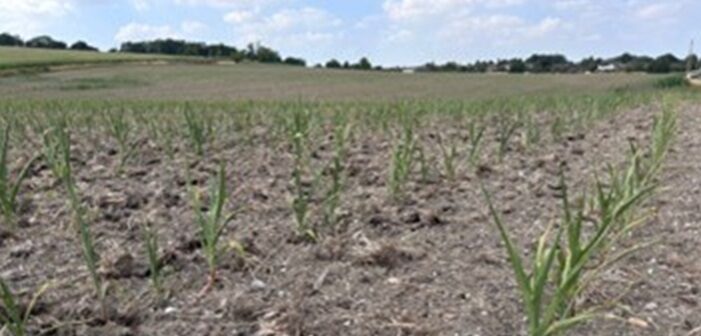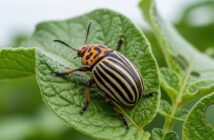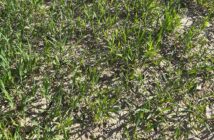Stressed crops of maize and potatoes struggling after a record dry spring and a third successive heatwave, could be given a lifeline with an application of an anti-stress treatment.
That’s the claim of Nigel Lyster, technical agronomist at Levity Crop Science. He acknowledges that while full yield potential may not be achievable at this stage, appropriate steps now can put crops into a viable ‘recovery position’ to nurse them through their current stress situation.
“Crops react to heat, drought and other abiotic stress factors in the same way: they produce reactive oxygen species (ROS),” he explains. “When ROS levels rise too high, a disastrous chain of events unfolds, damaging cell walls, arresting plant growth and development, and making the crop highly susceptible to disease.”
While maize is a semi-arid plant, Nigel says many newer varieties planted in the UK have been bred for cooler conditions. “It’s these that are suffering; the ones that are struggling to reach knee-high.
“If crops are showing leaf curl and discoloration, both are signs of stress. Maize will effectively shut down under stress, resulting in fewer cobs, tip back – when the kernels fail to develop, leaving the cob unfilled – or even complete cob abortion.
“Protecting the crop from stress during pollination and early kernel development is imperative.”
With potatoes, stress is most likely in unirrigated crops. However, Nigel warns that current conditions are extreme enough to induce stress in irrigated crops. “The brief drop in soil moisture between irrigation events can induce the stress phase,” he explains, “because the plant can’t take up nitrogen to satisfy its requirements.”
Under these circumstances, the potato plant will often lose part of its set. Repeated setting results in poor tuber size distribution.
Stress-relief products based on seaweed, amino acids or yeast extracts can be valuable in promoting a short-term growth effect, notes Nigel, but their mode of action remains unclear. “They comprise many complex ingredients. They’re more of a tonic, rather than a specific cure.”
Research at Levity’s UK set about identifying substances that would help the plant strengthen its cell walls, while mopping up excess ROS.
The result, Indra is a product that mimics, enhances or influences the plant’s biochemical processes. It’s dual action instructing the plant to produce polyamines, which act to rebuild cell walls, while the co-component – anthocyanins – absorb the damaging ROS.
Anthocyanins are what make blueberries a superfood, one of the most powerful antioxidants found in the plant kingdom, adds Nigel. “Indra puts the crop into a 3-4 week recovery phase. preventing stress taking hold and keeping the plant in a state where it will respond rapidly to rain or irrigation.”




